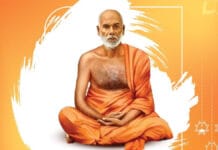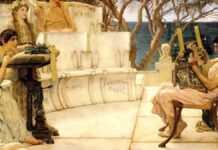Surrealist theatre emerged as part of the broader Surrealist movement that began in the early 20th century, primarily in France. Rooted in the ideas of André Breton, who published the Surrealist Manifesto in 1924, surrealist theatre sought to transcend rational thought and conventional storytelling by exploring the unconscious mind, dream logic, and irrational imagery. It was heavily influenced by the works of Sigmund Freud, whose theories on the unconscious and dreams provided a foundation for surrealist exploration. The movement was also a response to the chaos and trauma of World War I, rejecting the constraints of realism and logic in favour of a more liberated, intuitive, and often shocking form of artistic expression.
Unlike traditional theatre, surrealist theatre disrupted conventional storytelling techniques, which follow a linear narrative structure. It rejected realism and naturalism, instead embracing disjointed narratives, illogical sequences, and bizarre imagery that defied rational interpretation. The plays often depicted absurd, dreamlike worlds where time, space, and identity were fluid. By doing so, surrealist theatre sought to liberate the audience’s imagination and break down the barriers between reality and fantasy.
In surrealist plays, characters were often fragmented and inconsistent, shifting identities and speaking in disconnected, poetic, or nonsensical dialogue. These characters frequently represented abstract concepts rather than fully developed individuals, reinforcing the movement’s departure from traditional dramatic realism. Many surrealist playwrights used automatic writing and improvisational techniques to create scripts that captured the spontaneous flow of thoughts, often resulting in unexpected juxtapositions and contradictory elements.
The staging of surrealist theatre was equally unconventional. Set designs, lighting, and costumes were deliberately absurd, exaggerated, or dreamlike, often incorporating symbolic or abstract visuals that disrupted the audience’s expectations. Objects might take on human characteristics, and actors might interact with the environment in strange, unnatural ways. Costumes could be elaborate and fantastical, reinforcing the sense of surreal displacement. Music and sound effects were used unexpectedly, sometimes intensifying a scene’s emotional impact or creating dissonance that challenged the audience’s perceptions.
One of the most significant aspects of surrealist theatre was its emphasis on subconscious exploration and psychological depth. Rather than focusing on coherent narratives, surrealist plays aimed to evoke emotions and reactions through imagery and symbolism. This was intended to free the audience from traditional ways of thinking and encourage them to engage with art on a more instinctive, unconscious level. The theatre was a gateway to the dream world, where irrationality and spontaneity were celebrated rather than suppressed.
Surrealist theatre was deeply influenced by Dadaism, an earlier movement that embraced nonsense, spontaneity, and anti-art aesthetics. However, while Dadaism was primarily concerned with anarchic destruction of meaning, surrealism sought to uncover deeper truths by exploring the unconscious mind. This was reflected in the way surrealist theatre blended comedy, horror, fantasy, and eroticism, often in unpredictable and unsettling ways.
Several playwrights contributed to the development of surrealist theatre. In his works, Guillaume Apollinaire, who coined the term “surrealism,” experimented with non-linear storytelling and dreamlike sequences. His play The Breasts of Tiresias (1917) is considered one of the first surrealist dramas, challenging gender norms and using absurd transformations to explore themes of identity and creation. Another key figure was Antonin Artaud, whose ideas about the Theatre of Cruelty shared many similarities with surrealism. Artaud believed theatre should be a visceral experience, breaking free from conventional language and communicating through movement, sound, and symbolic imagery. His play Jet of Blood (1925) exemplifies surrealist elements with its shocking, fragmented narrative and grotesque imagery.
Other surrealist playwrights like Fernando Arrabal and Roger Vitrac created works that defied logic and traditional dramatic structure. Vitrac’s play Victor, or Power to the Children (1928), blended satire with absurdity, featuring exaggerated characters and bizarre events that mocked bourgeois conventions. Arrabal’s plays, such as The Architect and the Emperor of Assyria (1967), were filled with surreal, dreamlike sequences that questioned reality and authority.
Surrealist theatre had a profound influence on later avant-garde and absurdist movements. Playwrights such as Eugène Ionesco, Samuel Beckett, and Jean Genet incorporated surrealist elements into their works, creating plays that defied traditional narrative structures and challenged the audience’s perception of reality. The Theatre of the Absurd, which emerged in the mid-20th century, shared surrealism’s interest in illogical storytelling, dreamlike imagery, and exploring existential themes.
The legacy of surrealist theatre continues in experimental and multimedia performance art today. Elements of surrealist staging, such as disjointed dialogue, unexpected juxtapositions, and surreal visual effects, can be seen in modern theatre productions, films, and immersive performances. Filmmakers like Luis Buñuel and David Lynch have also drawn heavily from surrealist principles, using fragmented storytelling and dream imagery to create unsettling, thought-provoking narratives.
Surrealist theatre represents a bold departure from traditional theatrical conventions, embracing the irrational, the dreamlike, and the unconscious. Through its rejection of realism and its commitment to exploring the subconscious mind, surrealist theatre created a unique and provocative form of dramatic expression. Its influence can be seen across various artistic disciplines, from avant-garde theatre to film, literature, and performance art, ensuring its legacy continues to inspire and challenge audiences today.





























